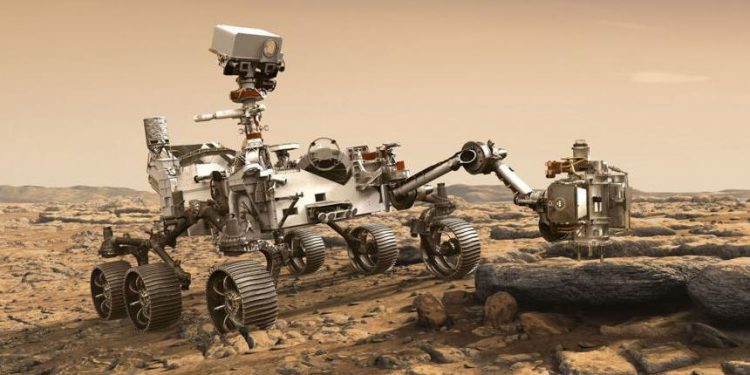New York: US-based space agency NASA’s Curiosity rover has hit a milestone as it celebrated the 10th anniversary of its landing on Mars August 5.
Ten years ago, a jetpack lowered NASA’s Curiosity rover onto the Red Planet, beginning the SUV-size explorer’s pursuit of evidence that, billions of years ago, Mars had the conditions needed to support microscopic life.
Since then, Curiosity has driven nearly 18 miles (29 kilometers) and ascended 2,050 feet (625 meters) as it explores Gale Crater and the foothills of Mount Sharp within it.
The rover has analysed 41 rock and soil samples, relying on a suite of science instruments to learn what they reveal about Earth’s rocky sibling. And it has pushed a team of engineers to devise ways to minimise wear and tear and keep the rover rolling: In fact, Curiosity’s mission was recently extended for another three years, allowing it to continue among NASA’s fleet of important astrobiological missions.
“We are seeing evidence of dramatic changes in the ancient Martian climate,” Ashwin Vasavada, Curiosity’s project scientist at NASA’s Jet Propulsion Laboratory in Southern California, said in a statement.
Curiosity has studied the Red Planet’s skies, capturing images of shining clouds and drifting moons.
The rover’s radiation sensor lets scientists measure the amount of high-energy radiation future astronauts would be exposed to on the Martian surface, helping NASA figure out how to keep them safe.
But most important, Curiosity has determined that liquid water as well as the chemical building blocks and nutrients needed for supporting life were present for at least tens of millions of years in Gale Crater. The crater once held a lake, the size of which waxed and waned over time.
Each layer higher up on Mount Sharp serves as a record of a more recent era of Mars’ environment. Now, the intrepid rover is driving through a canyon that marks the transition to a new region, one thought to have formed as water was drying out, leaving behind salty minerals called sulfates.






































